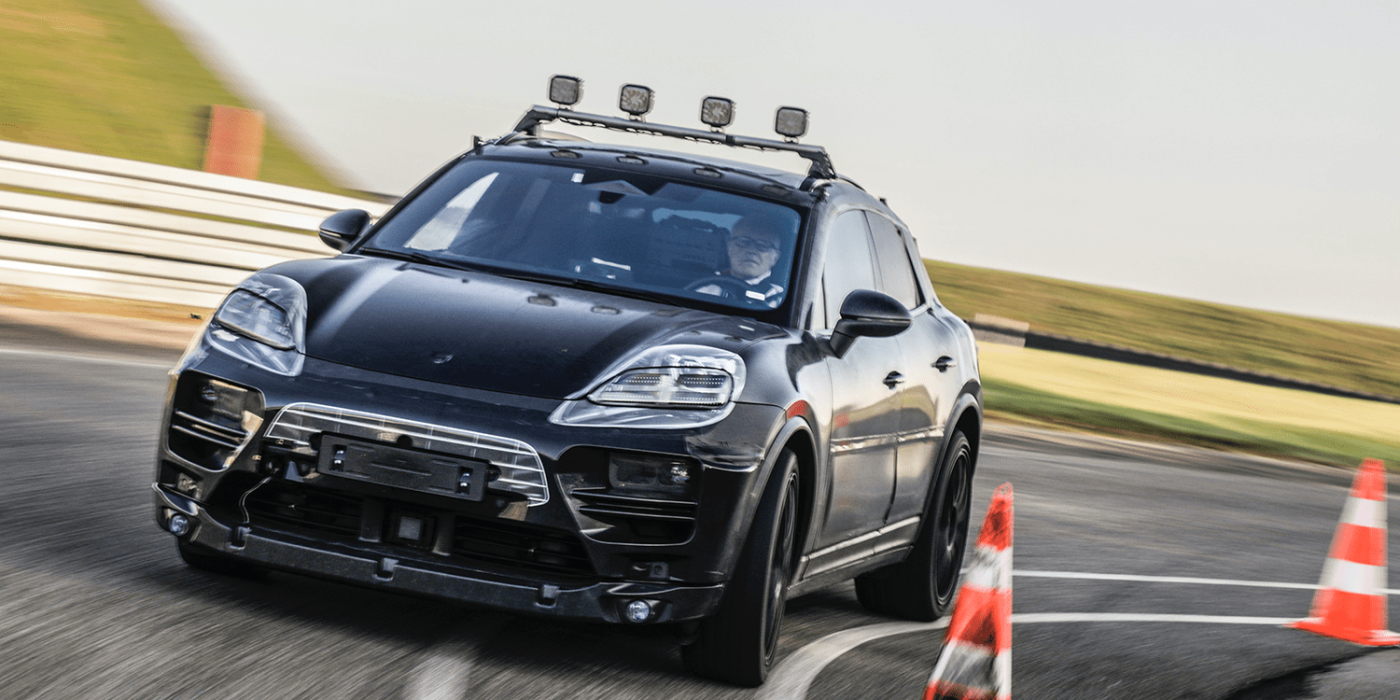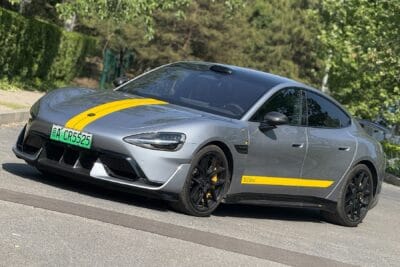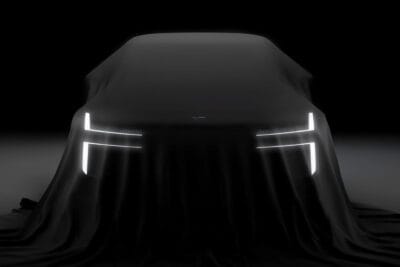Electric Porsche Macan to run on 450 kW power
Porsche has confirmed the first technical details for the upcoming all-electric Macan. The electric SUV will have all-wheel drive with one electric motor per axle as expected yet Porsche now published initial data on the battery and charging power.
It is clear that the battery will be made of prismatic cells: after all, the Premium Platform Electric (PPE) is to use the VW Group’s standard cell – and for this, as is well known, the developers have opted for a prismatic housing in which different cell chemistries can be installed depending on the segment. There are no details yet on the cell chemistry for the Macan. However, according to media reports referring to statements made by Porsche representatives at a preview event for the Macan, there is talk of an energy content of 100 kWh – whether gross or net remains open.
It is also already known that the battery is designed for a system voltage of 800 volts and that peak charging performance is targeted at least at the level of the Taycan, i.e. 270 kW DC. However, since the battery in the Macan is somewhat larger, the charging time should be less than 25 minutes – Porsche itself states 22.5 minutes for the Taycan. A special feature, according to the current reports, is the so-called “bank charging”: If the charging station only works with 400 volts (such as the wallbox at home), the battery is divided into two “banks” of 400 volts each – and the two 400-volt batteries can then be charged faster internally in parallel.
It is not only such charging tricks that are designed to contribute to “travel time efficiency”, but Porsche also improved the efficiency of the electric drive system. As with the Taycan, the PPE electric car will continue to have permanently excited synchronous motors (PSM), one per axle to be precise. However, the PSMs have been significantly revised: the magnets in the rotor have been rearranged to increase power density and efficiency. In addition, the power electronics were changed from silicon semiconductors to silicon carbide.
The system output is to be 450 kW “for the time being”. It is not clear from the reports whether the front electric motor can be switched off mechanically by a clutch or, as in the Taycan, by “zero-torque control”. However, there is some information about the rear drive unit: the top version is supposed to have an electronically controlled differential to improve agility. A two-speed gearbox as in the Taycan is no longer mentioned.
Some of these points, especially with the battery and charging, are of course also relevant for the PPE sister model Audi Q6 e-tron. The Audi will also adopt the PSM powertrains, albeit presumably with different power levels in detail.
As with the twin Porsche Taycan and Audi e-tron GT, which share the J1 platform, the Macan will be positioned somewhat sportier and more dynamic in terms of SUVs, while the Q6 e-tron will be tuned more towards travel comfort and everyday life. Therefore, both models will probably differ in some detailed solutions, even if this has reportedly not yet been finally decided. For example, it is still open whether Audi will adopt the electronically controlled differential. In addition, Porsche will probably install rear-axle steering with a five-degree steering angle for agility – in order to create the necessary installation space, a patent application has probably been filed for a so-called “Integrated Power Box”, in which the onboard AC charger, the high-voltage heater and the DC/DC converter are combined in one component. Audi, on the other hand, could use the additional space for a larger boot as an all-wheel steering system.
However, the data is not final, and there will be no certainty until the two models are officially presented. The reports also do not elaborate much on the software, which has caused a delay until 2024, at least for the Macan.
With reporting by Sebastian Schaal, Germany.





0 Comments